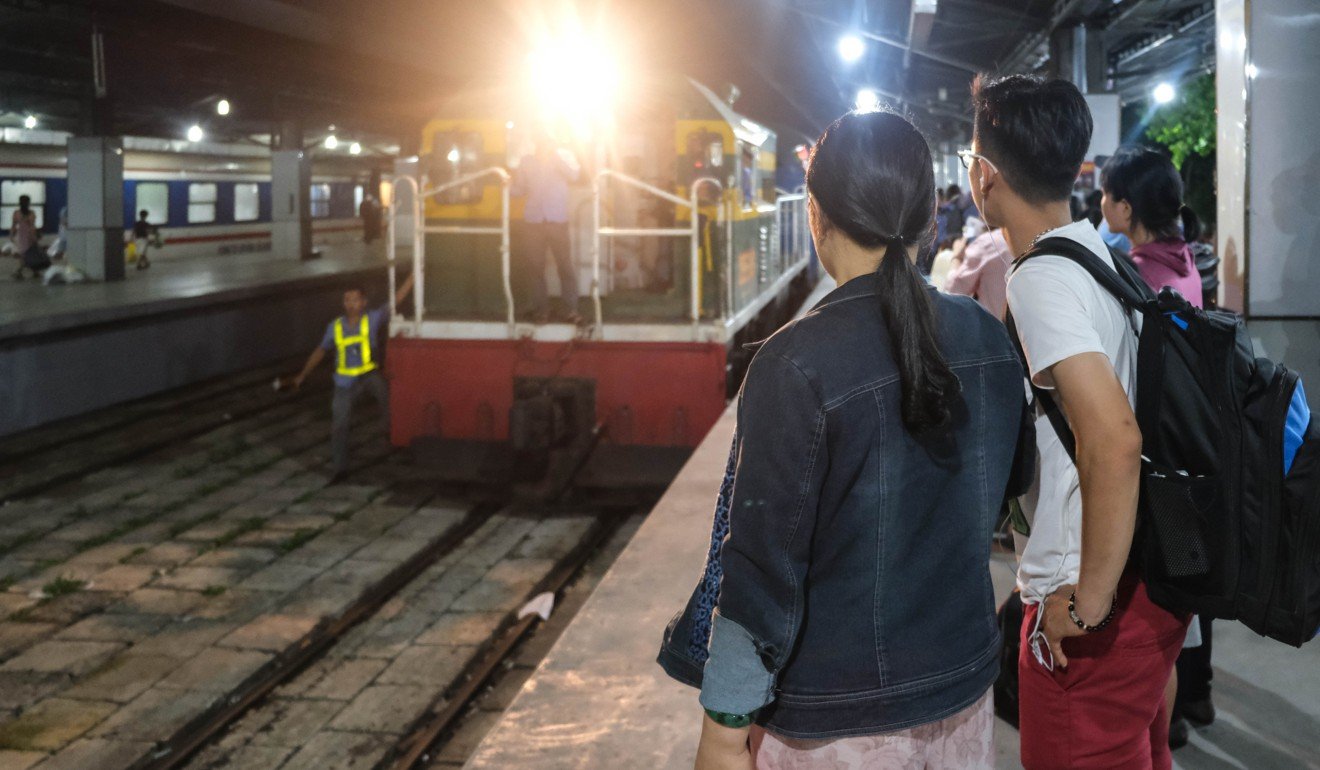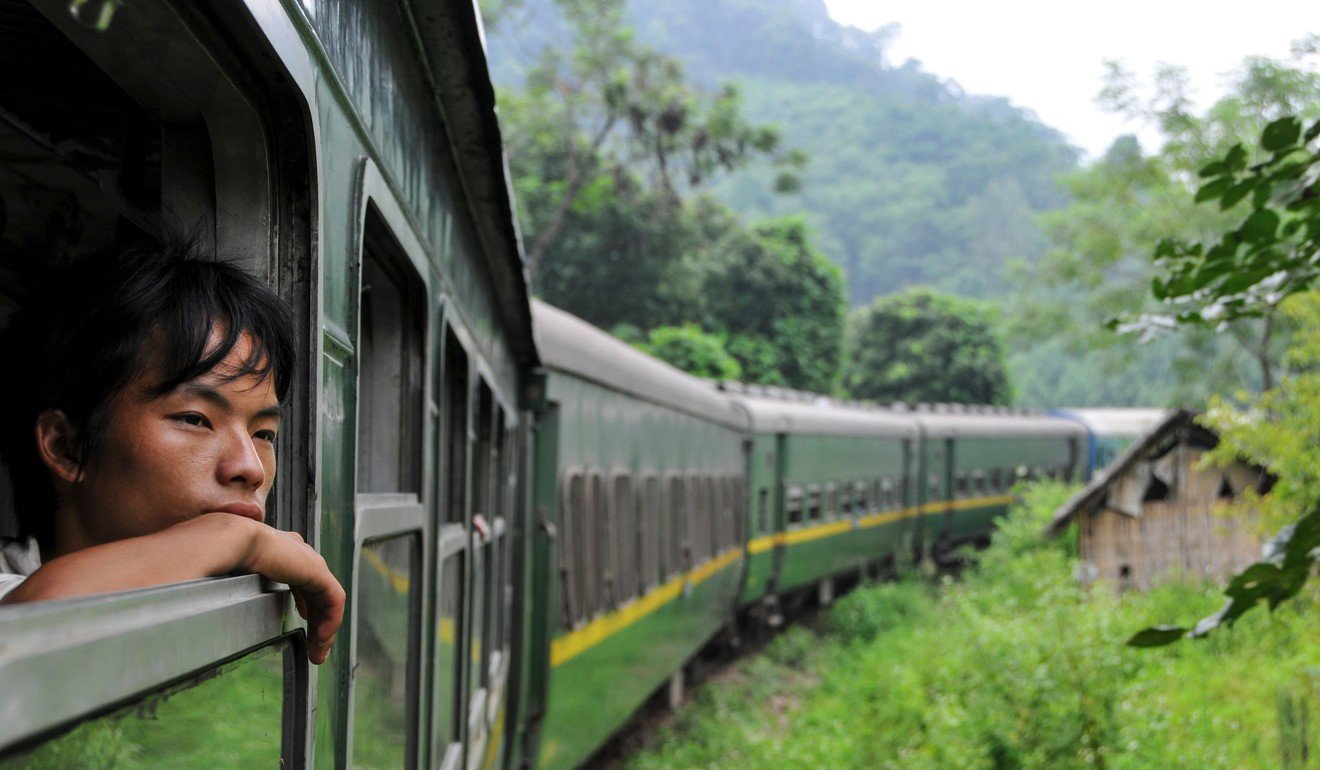
Vietnam by train: see ever changing country from the Reunification Express on its 31-hour trip north to Hanoi
- Effortlessly grasp the size, varied landscapes and cultural diversity of Vietnam by taking the train – you can stop off at the places you’d like to explore
- Nha Trang has a fabulous beach and diving, Hue has history, and Dong Hoi the world’s largest cave
Vietnam is long – extending 1,650km north to south – but only 50km across at its narrowest point. It includes stunning natural and architectural beauty that is best appreciated from the windows of the Reunification Express train – from the mountains of the north, to the endless miles of golden beaches in the middle, to the flat lushness of the Mekong Delta in the south.
Travelling Vietnam by train is the perfect way to take in the sights, smells and sounds of the country on a “slow travel” journey to remember.
While “express” is something of a misnomer – a non-stop journey between the two cities takes 31 hours – the train journey is a great way to understand Vietnam’s size, ever changing landscape and cultural diversity; thankfully, the trip can be split into shorter, more manageable shorter segments.

This it not only an economical way to travel, but is also a more environmentally sustainable travel experience, and a more interesting one as well, and many of Vietnam’s top attractions are within easy reach of stations along the route.
Ho Chi Minh City is the ideal place to start the journey. Its French-colonial architecture, museums about the conflicts of the last century, and spacious parks contrast with the glass-and-steel skyscrapers and construction work that is rapidly reshaping its skyline.
Trains leave from bustling Ga Saigon – the Vietnamese have made the French word for station, gare, their own. The metre-high portrait of Ho Chi Minh overlooking the waiting area is dwarfed by giant billboards for air conditioners amid the organised chaos of the waiting area – hundreds buying last-minute provisions, repacking voluminous luggage, and saying goodbye to loved ones.

Long-distance trains offer a variety of carriage options – from wooden seats to sleeping compartments with four or six beds, to a small number of two-bed VIP ones – and provide a more intimate and interesting travel experience than flying. It is the noisier option, though, as the combination of carriages rattling on old rails, food sellers hawking their boiled corn, snacks and drinks, and children playing mean that headphones or ear plugs are worth bringing to help with sleep.
Once the train leaves behind the sprawl of Ho Chi Minh City, Vietnam’s rural beauty is soon visible from the windows on both sides of the train – conical straw hats bobbing on the heads of workers tending rice fields alongside water buffalo and ancestral family shrines.

Continuing northwards, you can stop to sample the popular golden sands of Nha Trang beach, touted as one of the best in Vietnam. Snorkelling and scuba diving amid the reefs in Nha Trang Bay is a very accessible way to enjoy Vietnam’s natural beauty. There are also temples and waterfalls to explore.
Plastic-free in Asia: the tourism businesses doing their bit

The Imperial Citadel once dominated Hue, but destructive fighting during the French and American wars – as Vietnamese call the war for independence and the Vietnam war – left it badly damaged, and only a fraction of it remains today; yet this is still a sight to behold, as are the various royal tombs – in various states of dilapidation – that dot Hue’s fringes and the splendour of towering Thien Mu pagoda, possibly the country’s most famous Buddhist building.
North of Hue, trees start to replace palms. We are now solidly north of the demilitarised zone that divided the country during the Vietnam war in the 1960s and early 1970s, and bomb craters are still visible near bridges and train stations – now filled with water, they make convenient ponds.

Church spires increasingly rise above the towns and villages, a reminder that at least seven per cent of the country identifies as Catholic – a legacy of the French colonial era that has survived the various stages of the now-communist country’s transformation.
Why Bali has had enough of begpackers
Alight at Dong Hoi station to visit Phong Nha-Ke Bang National Park, home to caves that include the world’s biggest and third largest. The massive Phong Nha cave is one of the most accessible in the area, reached via a boat ride along the Son River.

It is home to some great museums and parks, among them Ho Chi Minh Museum, which sits amid sprawling parkland at the Ho Chi Minh Memorial complex, so you can get a dose of nature and culture in one visit. Stay a while to try the famous egg coffee or enjoy a walk around some of the numerous lakes while considering where to go next.

From Sapa, buses travel to neighbouring China or Laos, allowing further slow travel adventures across Southeast Asia; it is possible to travel by bus or train across Indonesia’s Java island, and the length of Malaysia and Thailand, and Cambodia’s ageing rail network is being revitalised.
Also by Peter Ford: Singapore to Kuala Lumpur by train
If you go: for more information about the trains travelling the Reunification Express route visit seat61.com. You can book your onward train journey when you arrive at each station to allow you some flexibility, but aim to get your tickets at least 1 day in advance to ensure availability.
Bring a mug, noodles and coffee or tea to make best use of the free hot water on board. Food sellers offer everything from fresh fruit to boiled eggs. The restaurant car also offers refreshment. Vegetarian options are limited, so plan ahead if you have specific dietary needs.
The group trying to stop us all being terrible tourists
Getting there: VietJet, Hong Kong Airlines, Cathay Dragon and Vietnam Airways offer frequent direct flights between Hong Kong and Vietnam (Ho Chi Minh City and Hanoi).
From Ho Chi Minh City, buses head north to Cambodia, or west into the Mekong Delta. Buses and trains leave Hanoi for China, where connections allow rail travel all the way to Europe.

